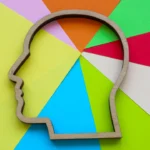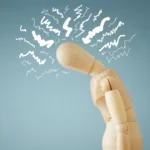Understanding ADHD
ADHD stands for attention deficit hyperactivity disorder. The mental health disorder is characterized by challenges with focus, impulse control and hyperactivity which can interfere with how a person functions at home, school, work or in social situations.
ADHD was once classified as two distinct types of disorders: Attention deficit disorder (ADD) and attention deficit hyperactivity disorder (ADHD). Someone with inattentive disorder who did not show signs of hyperactivity was diagnosed with ADD. Someone showing signs of both would be given an ADHD diagnosis.
Therapy.com is user supported. We receive a commission fee from purchases made through BetterHelp links.
Learn More
However, changes have been made in recent years. Today, the Diagnostic and Statistical Manual for Mental Disorders, 5th edition, lists ADHD as a single diagnosis with three presentations. ADHD is considered a spectrum disorder in which people have a wide range of symptoms and symptom severity.
ADHD presentations include the following:
- Predominantly inattentive
- Predominantly hyperactive
- A combination of inattentive and hyperactive
The onset of attention deficit hyperactivity disorder is usually before age 12 and is not related to other disorders that typically affect children. ADHD can negatively affect how a person performs academically, professionally, personally and socially.
The Neurodevelopmental Basis of ADHD
ADHD is a neurodevelopmental disorder which means that its etiology lies in the structures and functioning of the brain. Researchers are continually working to understand why some people develop the disorder and others do not.
Because ADHD typically begins in childhood and there is some evidence that children with ADHD may experience delays in the development of certain brain structures and specifically those associated with impulse control, working memory and attention.
ADHD may also be attributed to imbalances in neurotransmitters like dopamine and norepinephrine. Differences in the absorption, transmission, and circulation of these critical neurotransmitters can impact ADHD symptoms.
ADHD can be genetic with some research showing a heritability rate of between 74 and 88%. If a parent or a close family member has ADHD, there is a high probability that their child or relative will also have symptoms.
Specific genetic syndromes, such as Williams Beuren or DiGeorge Syndromes, can be linked to ADHD. So, if a parent and child have the same syndrome, they may also develop ADHD.
Understanding a person’s brain development and genetic risk factors can help in diagnosing and treating ADHD.
Therapy.com is user supported. We receive a commission fee from purchases made through BetterHelp links.
Learn More
Prevalence of ADHD
Statistics show that 10.5% of children and adolescents between 4 and 17 have ADHD. Approximately 1 in 9 adults will experience ADHD in their lifetime. If those diagnosed with ADHD, other statistics show the following:
At all ages, ADHD is more common among males than females.
Common Misconceptions and Stigma
Misconceptions and stigma about ADHD can make it hard for some people to get the help they need. Some people mistakenly believe one or more of the following about ADHD:
- It’s a made-up disorder.
- It’s due to a lack of self-control or discipline from parents.
- Video games cause it.
- Kids who have ADHD are bad.
These untruths can lead to children and adults feeling abandoned and rejected and they may not realize help is available. They may turn to substance abuse or negative behaviors to cope. Getting the proper ADHD treatment is imperative.
Signs and Symptoms
There are three main symptoms used to diagnose someone with ADHD, including inattention, hyperactivity, and impulsivity. People with ADHD may have a combination of symptoms.
Inattentive ADHD symptoms may present in the following ways:
- Trouble concentrating or paying attention
- Easily distracted
- Trouble staying organized
- Trouble following instructions
In children, adolescents, and adults, inattention may appear as:
- Making careless mistakes
- Having trouble staying focused on school or work activities
- Appearing to not listen to others
- Having poor time management skills
- Losing items like glasses, keys, pencils, papers, etc.
- Missing deadlines
Hyperactivity and impulsiveness may present as:
- Fidgeting or squirming while sitting down
- Having trouble staying seated
- Having difficulty doing activities that require being quiet
- Constantly moving around
- Talking too much or out of turn
- Answering questions before it’s time
- Interrupting others during conversations
ADHD in Men and Women
Men and women may differ in symptomology. Men tend to have more trouble with hyperactivity and impulsiveness and women struggle more with inattentive ADHD.
ADHD in women includes symptoms that are self-focused and internalized or self-harming. Men’s symptoms are externalized like misusing substances and acting out behaviorally.
ADHD at Home
Symptoms can interfere with your ability to manage your home and family responsibilities. You may get easily distracted from daily chores like laundry, cleaning or paying bills.
Starting projects but not finishing them is a common sign. There may be half-painted rooms, half-finished construction projects and piles of laundry that never seem to get finished.
Therapy.com is user supported. We receive a commission fee from purchases made through BetterHelp links.
Learn More
ADHD at Work
ADHD can also interfere with completing projects and reaching goals at work. Missing project deadlines, having a messy desk or disorganized files and having multiple projects going on at once but with none of them making progress.
Time management, getting distracted by coworkers, forgetting meetings and appointments, losing important documents and miscommunications are common signs of ADHD in the workplace.
ADHD and Relationships
ADHD can interfere with essential relationship needs like remembering a date or event. It can also make concentrating during intimate conversations difficult. This may leave your partner feeling rejected.
Impulsive behaviors can lead to mistakes that ruin trust or intimacy and communication problems can make it hard to maintain relationships across the longer term.
Unrecognized ADHD Signs
Any of the above symptoms for ADHD can be very mild and therefore may go unrecognized. This is especially true if the person is high functioning and successful at school or work.
Additional signs of ADHD may be covered up by another mental health or substance use disorder. The issue causing the most obvious and significant problems in life will take center stage. For example, misusing drugs and alcohol will usually be seen as the central problem and the connection to ADHD symptoms may be missed.
Additional unrecognized ADHD signs may include physical ailments, emotional dysregulation and sleep disturbances. You may experience frequent headaches, changes in appetite, gastrointestinal upset, interrupted sleep or insomnia and other physiological signs of stress.
The Positive Side of ADHD
Many people consider the symptoms of ADHD to be wholly negative. But there are positive attributes. The positive aspects of ADHD include a tendency toward spontaneity, energy and resilience.
A person with ADHD is likely to have wide and varied interests due to their ever-shifting focus. This can give those with ADHD a unique ability to converse with various people and topics.
When to Seek a Professional Evaluation
Anyone experiencing symptoms of ADHD should reach out for help from a licensed mental health professional who can perform an evaluation using multiple diagnostic tools. This is especially important if you’re struggling to complete tasks at work, school or home.
Therapy.com is user supported. We receive a commission fee from purchases made through BetterHelp links.
Learn More
Avoid waiting until the signs of ADHD become problematic as early intervention increases the likelihood of prompt and effective management of the condition. There’s no need to suffer in your home or work life when help is available.
Diagnosis and Assessment
The evaluation process for ADHD begins with consultation with a licensed therapist, psychologist or psychiatrist. The clinician should have a master’s degree or higher from an accredited college and many hours of clinical practice to include experience in performing assessments.
During the assessment, a clinical interview will help your therapies understand your ADHD symptoms and how they affect your life. Attention deficit hyperactivity disorder test options and evaluation methods may include the following:
- Mental health screenings
- ADHD screenings
- Vanderbilt Assessment Scale
- Child Attention Profile (CAP)
- Behavior Assessment System for Children (BASC)
- Child behavior checklists
- Teacher reports
- Conners Rating Scale
Comprehensive diagnostic criteria following the DSM-5 guidelines are required. To be diagnosed with ADHD a person must exhibit a pattern of behavior that aligns with one of the three presentation types.
Differential diagnoses and comorbid conditions may include anxiety, depression, substance use, and sleep disorders. There may also be physical, neurological, or learning disorders contributing to the symptoms. These may complicate the diagnostic process, may exclude the ADHD diagnosis or may delay the diagnosis.
A clinician must assess clients developmental history and conduct neuropsychological testing to ensure an accurate ADHD diagnosis. Self assessments are not enough and are often inaccurate due to their limitations.
A qualified therapist will understand key differences in ADHD presentation particularly as these manifest in adults versus children or women versus men. As has been seen, women tend to struggle most with inattention while men tend to struggle with hyperactivity.
Clinicians must be adept in recognizing telltale signs of inattention and hyperactivity as they characteristically manifest in diverse age cohorts and across genders.
When you’re being evaluated for ADHD, you’re likely to engage in a variety of neurological testing and robust interviews with your therapists. They’ll assess your results and make a determination as to whether you have ADHD.
Therapy.com is user supported. We receive a commission fee from purchases made through BetterHelp links.
Learn More
FAQs
There is a difference between ADD vs ADHD. ADD stands for attention deficit disorder, in which inattention is the main symptom and is an outdated diagnosis according to the DSM-5.
ADHD stands for attention deficit hyperactivity disorder. It is now the only diagnosis for someone with inattention and/or hyperactivity symptoms. ADHD is an umbrella diagnosis with three presentations: inattention, hyperactivity, or both.
Multiple ADHD symptoms in women are overlooked. Women experience more inattention symptoms than men, who experience more hyperactive symptoms.
Women with ADHD mask their symptoms and remain high functioning. This makes it hard to tell if they have ADHD. For example, they may work extra hours because they’re trying to keep up with deadlines that their challenges with inattention may have otherwise caused them to miss. ADHD in women is often covered up because they develop coping skills to hide their struggles.
ADHD medication is necessary for some people. Medical doctors, including psychiatrists, can evaluate and diagnose someone with ADHD. They will determine if medication is needed.
Some people with ADHD can implement coping strategies that do not require medication and be successful at work, home, and school. Non-medication ADHD treatments include skill development in time management, organization, social skills, parenting, mindfulness and neurofeedback. These can be learned through cognitive behavioral therapies.
ADHD is an actual disability. It is diagnosable according to specific criteria outlined in the DSM-5. A person may have one of three types of the disorder based on their symptom presentation
The only way to receive an accurate ADHD diagnosis is to be evaluated by a licensed mental health professional or doctor who specializes in the disorder.
Online tests are not always accurate because they don’t always ask the right questions regarding your symptoms. They also don’t consider other possible causes for your symptoms. Seeking professional help is highly recommended for anyone thinking they have ADHD.
Treatment Options for ADHD
Most clinicians take a multimodal philosophy when treating ADHD. They devise an integrative plan that includes medications, behavioral therapies, skills training, lifestyle changes, executive function coaching, support and accommodations at work or school. They also include digital health tools, apps and alternative therapies.
Therapy.com is user supported. We receive a commission fee from purchases made through BetterHelp links.
Learn More
ADHD treatment plans are unique to the individual, with each person receiving different recommendations.
Medications
Clinicians have two choices when it comes to prescribing medication to treat ADHD: stimulants and non-stimulants. Stimulants include amphetamines and methylphenidates.
Behavioral Therapies
For young children, behavior treatment includes parenting skills to train parents how to teach their children coping skills at home. Schools may also be part of the ADHD treatment plan, working with behavior modification in the classroom. Everyone involved in a child’s life needs to be on the same page to help them learn to manage their ADHD symptoms.
Cognitive behavioral therapies are usually recommended for adults with ADHD. They can learn new skills to control symptoms.
Lifestyle Interventions
Small lifestyle changes can significantly improve ADHD symptoms. A treatment plan includes avoiding sugary foods that increase hyperactivity, getting daily exercise, getting proper vitamins and nutrients and getting restorative sleep.
Executive Function Coaching and Support
Clinicians have many tools to teach people with ADHD to stay organized, manage their time, reduce stress and increase productivity.
Educational Accommodations and Workplace Strategies
Accommodations that specifically help someone with ADHD include allowing the person extra time to complete projects. Giving them a workspace with minimal distractions, quiet, and privacy can help. Often, giving someone more time and flexible scheduling can lead to better outcomes.
Digital Health Tools and Apps
Digital health tools and apps that are effective in treating ADHD range from Google Calendar for adults to Evernote and HabitHub for students. Hundreds of apps and tools exist and working with a therapist will ensure that the right ones are incorporated into the ADHD treatment plan.
Therapy.com is user supported. We receive a commission fee from purchases made through BetterHelp links.
Learn More
Alternative and Complementary Approaches
Mindfulness practices like meditation, yoga and tai chi are great ways to treat ADHD. Neurofeedback, sensory integration training, music therapy, exercise, diet and nutrition should complement any treatment plan.
Treatment Considerations for Inattentive ADHD
Inattentive ADHD treatment requires an individualized plan. Clinicians will likely consider integrating behavioral therapies, mindfulness, lifestyle changes and modifications at work and school. Medications may also be an asset, helping clients stabilize as they learn to incorporate the other therapies into their life.
Finding a Treatment Provider
Finding the right treatment provider means searching for licensed providers specializing in ADHD. These clinicians will have both training and experience in caring for persons with ADHD. This may include expertise in working with female clients, children, or persons with a family history of the condition, as their needs may be especially complex.
Therapy.com is user supported. We receive a commission fee from purchases made through BetterHelp links.
Learn More



